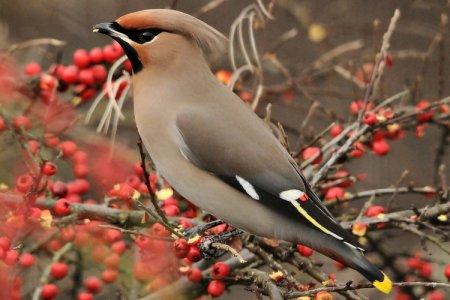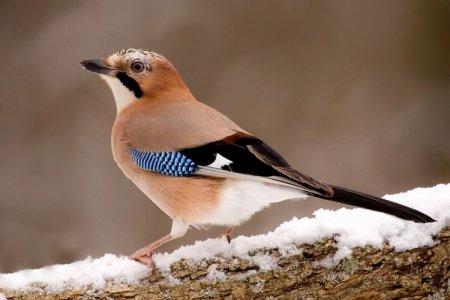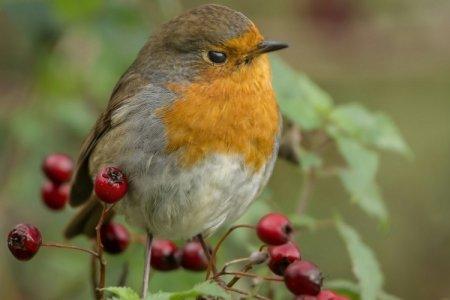
Little brave blackbirds are not a frequent visitor in a bustling city. But you will surely meet them during outdoor recreation or travel. They are easy to recognize by their unusual colors, which look bright, despite the nondescript beige and brown colors.
general description
Thrushes are very diverse, so it is difficult to get a general description. But most often there is a song thrush, therefore, we will make a start from it.
Appearance
Thrushes are passerines and have the same characteristic body structure. The thrush is long - up to 25 cm with an average weight of up to 100 g. The wingspan reaches 40 cm, but in general the size variation is several times. For example, the smallest gray-throated thrush weighs about 20 g, and the largest, the largest, 175 g.
The thrush has a very characteristic manner of movement: they seem to jump and crouch. The birds have a small graceful head with large black eyes, due to which it can be assumed that before they were only nocturnal.
The beak of a thrush is thin, short, but very strong. The body looks stocky, and the wings are not too large. This is the reason for the terrestrial lifestyle of most thrushes. Faster nomadic species have much larger and sharper wings.

Male and female thrush: differences
There is no unambiguity here either. While in some species of thrushes, females and males are almost the same, in others this dimorphism is clearly expressed. Most often this applies to variegated species. In general, females are slightly smaller than males.

Singing
The thrush is considered the best performer among the passerines, but in reality this only applies to the common song thrush. It is his trills that are so sonorous and harmonious throughout the spring. By the way, even the name "thrush" appeared because it is somewhat consonant with the sounds that birds make.

Albino Thrushes
A curious natural fact: albinos are often found among blackbirds. This is not some kind of curiosity, and snow-white birds can be found even in our villages or outside the city. But in the wild forests less often, because there they are excellent prey for predators.

How many blackbirds live
Wandering thrushes live for about 3-5 years due to their dangerous lifestyle. More sedentary birds live much longer - up to 11 years. There are even known cases of the appearance of 15-year-old individuals. In captivity, some species can live up to 20 years.

Species of thrushes
There are so many varieties of blackbirds that it is impossible to sort them out at once. Therefore, we have chosen those species that are most often found and are most popular!
Songbird
He is ordinary, and massively living in our latitudes. It has a spotted olive brown color with a light belly and a yellowish chest.

White-browed thrush
It can be recognized by its characteristic white stripes above the eyes, which really resemble eyebrows. These thrushes prefer birch groves, are not afraid of cold weather and feel great in rocky terrain.

Blackbird
It settles mainly in the forests and has a very secretive and cautious character. Outwardly, blackbirds are very similar to jackdaws, but the presence of specks is visible close up.

Wood thrush
It is also called stone, and this is the smallest representative of its family. Its plumage casts in blue, and with it the white belly and red breast are in sharp contrast.

Thrush-fieldfare
This species got its name for its love of berries in general and mountain ash in particular. The spotted brown thrush is especially common in Siberia. He has a very harsh singing from a set of squeaks, rattles and squeals.

Miser's thrush
A large European thrush, the largest of its kind. He settles almost everywhere, including near people. The deer has a very interesting spotted belly, slightly reminiscent of a leopard print.

Thrush lifestyle
Despite the fact that blackbirds settle closer to the ground in the lower tiers of the forest, they are very active and mobile. Even sedentary birds often travel for weeks in search of food.
Habitat
Thrushes were originally common in New Zealand. Since then, they have spread to other continents. Moreover, they are completely indifferent to the lifestyle: they can live independently or in groups, in trees or almost on the ground.

The diet
Thrushes feed on insects of all kinds and sizes, including caterpillars and butterflies. Some species prefer larvae, slugs and snails. Thrushes love seeds and berries, of course. Some species can eat carrion and even chicks of other birds.

Wintering
Thrushes are migratory birds, so all inhabitants of the middle and northern latitudes go to winter in warm regions. Basically, they temporarily settle in warm European countries and in the northern regions of Africa. Thrushes are not afraid of frosts, so they return from wintering very early. And in the presence of food, they may not fly away at all.

Keeping in captivity
Songbirds and blackbirds have long been caught because of their beautiful singing. They feel good in captivity if you provide them with a spacious cage with everything you need and, of course, with a bathhouse and a soft ceiling. Thrushes are very clean, so it is important to keep order. In addition, they do not like to share territory with competitors, so in this case it is better to keep them separately.

Reproduction of blackbirds
Depending on the weather, during the season blackbirds nurse up to two clutches of 3-7 chicks each. Sometimes chicks of different ages can be found in the same nest. Thrushes enter the mating season from 2 years old. Then they start to break into pairs and keep them throughout the season.
Nesting starts in April, but it depends on the region and the weather. With the help of their songs, the blackbirds not only form pairs, but also inform about the danger, and even motivate the chicks to fly.
Thrushes have fairly large nests and are easy to spot in nature. They are usually found at a height of 1 to 4 m from the ground between tree branches, twisted from sticks, straw, roots, moss and bark. In addition, thrushes like to settle in hollows, gorges, tree stumps and dense bushes.
Thrush eggs are green or blue, sometimes speckled. The female incubates them, but the male can replace her as needed. The male does not get food, but carefully guards the territory. Chicks are fed by both parents from 1.5 to 2.5 weeks.

Natural enemies
Human activities are dangerous for thrush. They are forced to fight in garden plots, because gluttonous birds literally destroy the crop. In the wild, their main enemies are large birds, cats, hedgehogs, snakes, martens and squirrels. Predators are especially attracted to defenseless, but bright and noticeable clutches.

Thrushes - bird photo
And to show you how diverse blackbirds are in real life, we have prepared a large selection of photos!





























